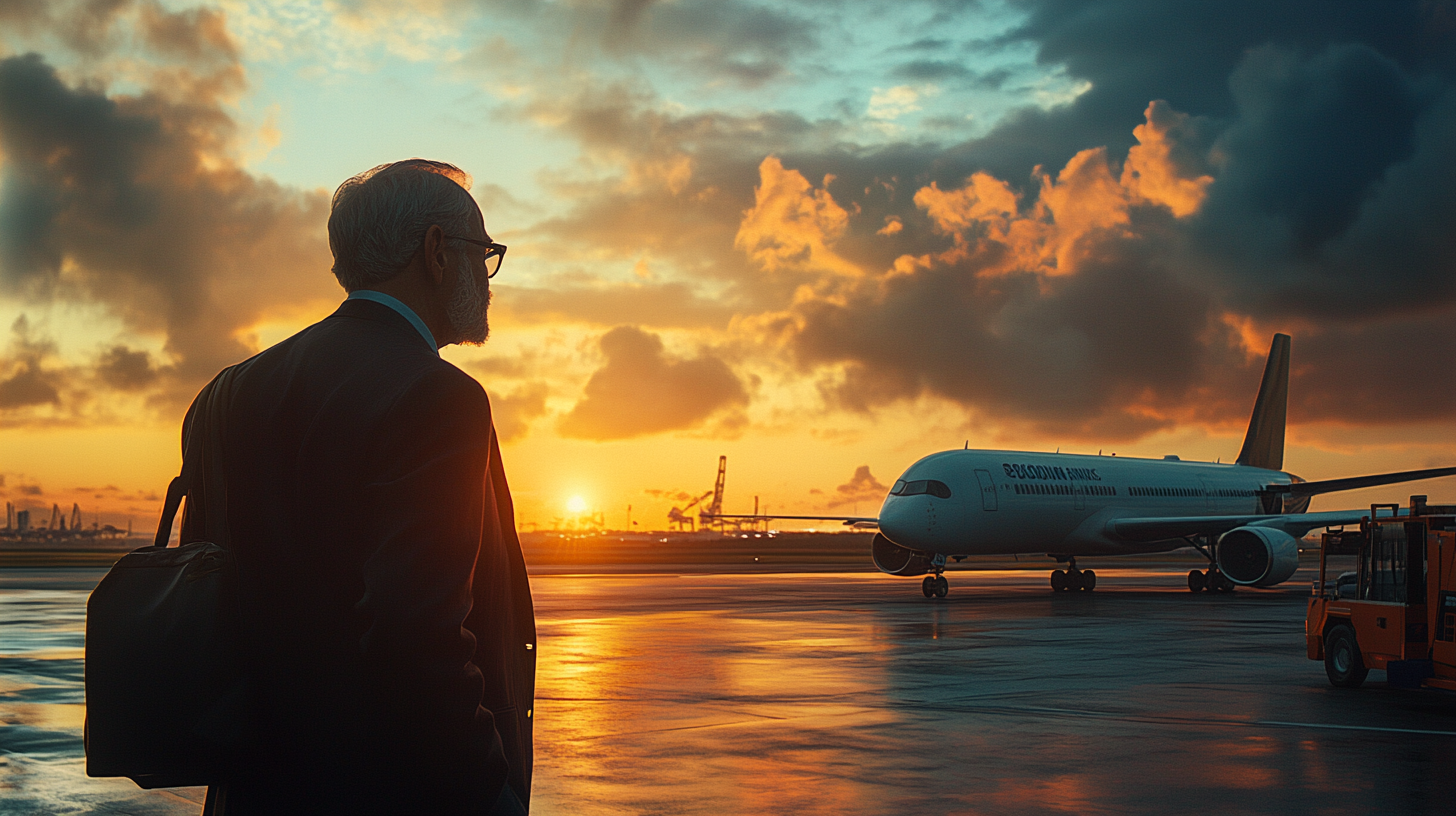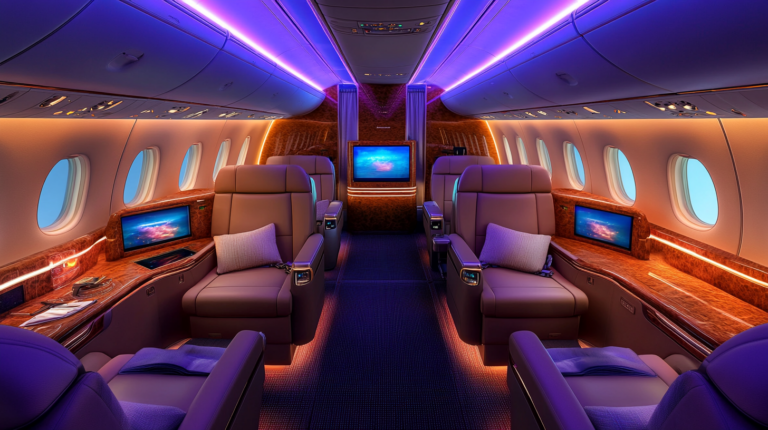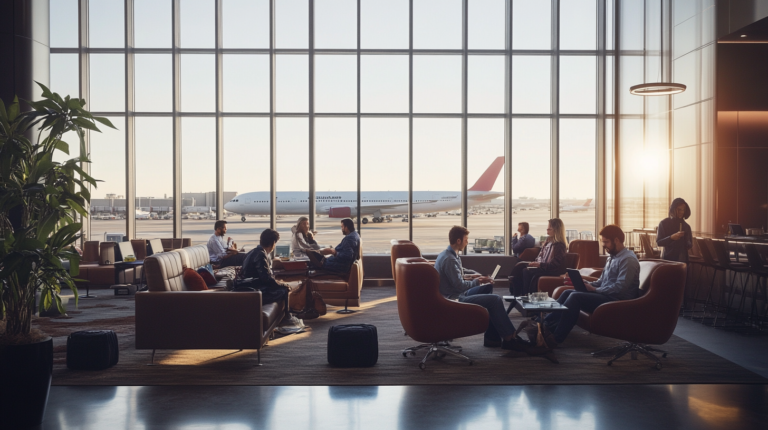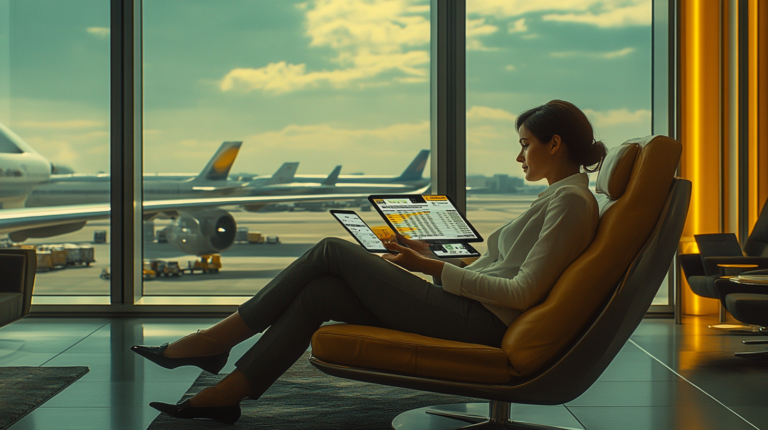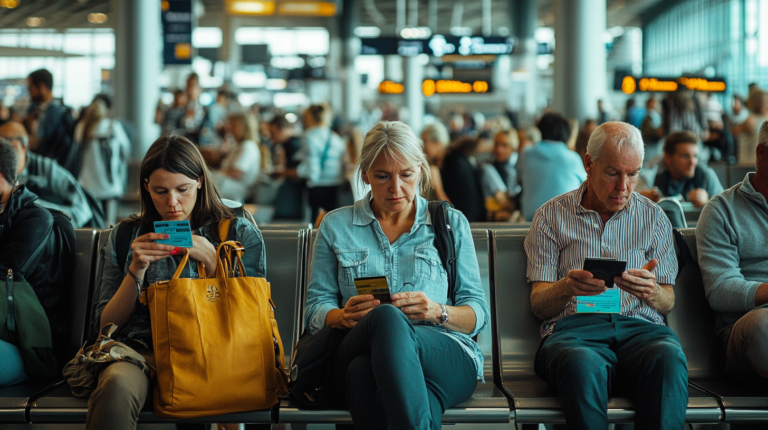5 Business Travel Transformations to Watch in 2025
I’ve observed that the energy surrounding corporate travel this year is unlike anything we’ve seen in the past decade. After substantial downtime and uncertainty, the travel industry appears determined to push boundaries in technology, sustainability, and traveler well-being, confirmed by data from GBTA‘s Q1 2025 poll and Globetrender‘s collaboration with Amadeus Cytric. It’s an amazing moment for frequent flyers, who are now witnessing an accelerated pace of transformation that’s bringing new levels of personalization, eco-consciousness, and efficiency.
1. AI and Mobile Integration for Seamless Journeys
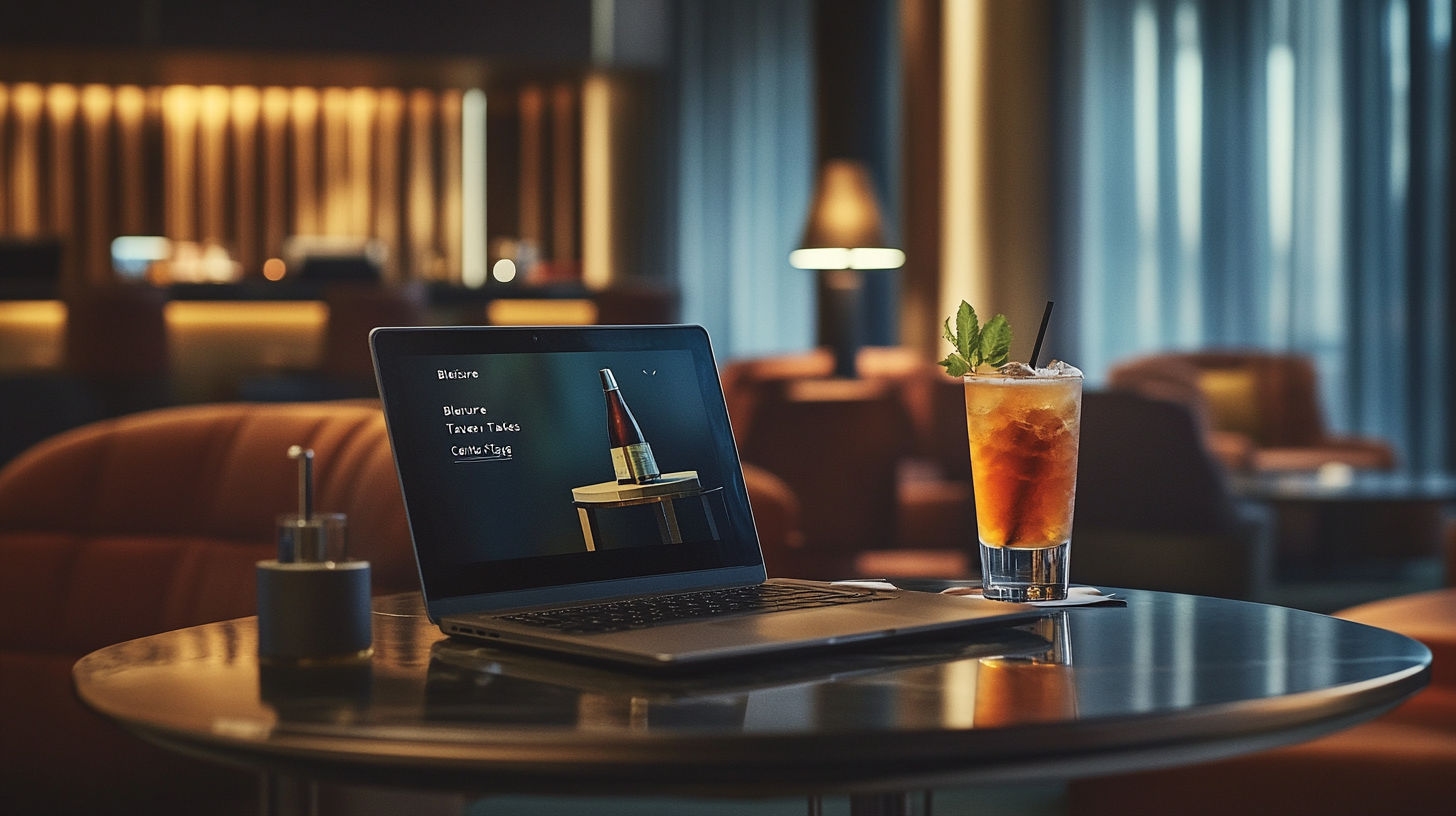
AI-driven solutions have come a long way since their early demos just a few years ago. Now, I’m seeing corporate travel managers widely adopt self-booking websites and apps that use machine learning to suggest flights, hotels, and even ground transportation options tailored to each traveler’s preferences. According to Navan‘s 2024 Insight Report, this approach has already reduced average booking times by up to 40%, hinting at a major shift in how we plan business trips.
In my own experience observing travelers, the integration of AI doesn’t stop at booking. Real-time itinerary updates through mobile apps and wearable devices can detect flight delays, weather disruptions, and even local traffic patterns. A recent study suggests that multi-factor authentication and biometric check-ins are helping employees move faster through security lines, shaving precious minutes off each leg of the journey. The result is less time spent waiting, more time spent being productive.
There’s also a fun, futuristic bend to all this. VR/AR solutions are being used by some organizations to conduct virtual site visits, allowing teams to get a feel for a potential destination before ever leaving the office. While it doesn’t replace the human touch entirely, the possibility of previewing meeting venues or conference layouts through immersive technology offers a fresh way to cut down on guesswork—especially important given that multiple industry polls predict a 57% increase in corporate travel spending by the end of this year.
2. Bleisure Travel Takes Center Stage

Whenever I see coworkers or friends traveling for business now, there’s a high chance they’ll extend their stay by a day or two to explore local attractions, relax, or even meet friends in the area. This “bleisure” concept is especially appealing to younger generations. A recent survey from major consulting firms shows that over 65% of Millennial and Gen Z employees believe mixing work with leisure time leads to more creativity and better work-life balance.
I’ve noticed company travel policies adapting quickly to this trend. In many organizations, it’s no longer taboo to request an extra night at the hotel when business obligations are finished. Some companies even encourage employees to unplug for a day or two, believing it fosters a more engaged and motivated workforce. According to industry data presented last quarter, these extended stays have only a minimal impact on overall budgets but can significantly boost employee satisfaction.
The benefits of bleisure travel aren’t just anecdotal. When employees are happier on the road, they’re more likely to build better relationships with clients and partners. ABI Research indicates that well-rested and contented team members can be up to 30% more effective in negotiations or strategic planning sessions. I’m a huge fan of this approach, as it merges profitability with humanity in a way that makes travel more memorable and rewarding for everyone.
3. Sustainability as a Competitive Advantage

Over the last year, cutting-edge companies and conscientious travelers alike have moved past the idea that sustainability is just a nice optional extra. Stricter regulations, corporate responsibility initiatives, and public demand for greener options have pushed sustainability to the forefront of travel priorities. I see more organizations doling out incentives for employees who choose rail over short-haul flights or stay at eco-certified hotels.
The data is equally compelling. Research from various environmental agencies suggests that shifting even 10% of business trips from air to high-speed rail can reduce a company’s carbon footprint by a staggering amount—sometimes up to 50%, depending on the route. And it’s not just about emissions: some corporate travel managers are analyzing water conservation, waste reduction, and community impact when selecting hotels and venues for meetings.
Interestingly, a growing number of employees explicitly cite a company’s environmental policies as a key factor in choosing where to work. This lines up with what I’ve heard from recruiters who say that the best talent wants to align with organizations that take green initiatives seriously. In today’s competitive hiring landscape, offering sustainable travel programs can be a genuine differentiator, showing both clients and staff that you’re committed to planet-focused progress.
4. Evolving Employee Demographics and Workplace Practices

One of the most remarkable trends I’ve come across is the changing makeup of today’s traveling workforce. From remote roles to more robust gender-equity programs, companies are rethinking policies in ways that put individuals, not just the bottom line, front and center. According to GBTA Board insights, stamping out friction for travelers might include offering flexible meeting spaces or implementing advanced biometric tools for security checks—a boon for anyone who’s ever stood in a painfully long baggage queue.
This transformation goes beyond just technology. I’ve noticed a real focus on inclusivity: travel protocols that accommodate expectant mothers, team members with medical conditions, or non-traditional family setups. On-the-go wellness services, such as virtual therapy sessions or guided meditation apps, are also becoming standard additions to some corporate travel packages. The overarching idea is that a happier traveler is usually a more productive and loyal employee.
Safety remains paramount. I’ve seen companies roll out traveler tracking systems that can rapidly alert managers if employees encounter an emergency or sudden change in location risks. A recent industry statistic indicates that travelers are 35% more likely to escalate potential problems to management if they know there’s a well-structured support plan in place. Building trust between company and traveler not only elevates peace of mind but directly impacts a trip’s success rate.
5. The Big Rebound in Corporate Spending
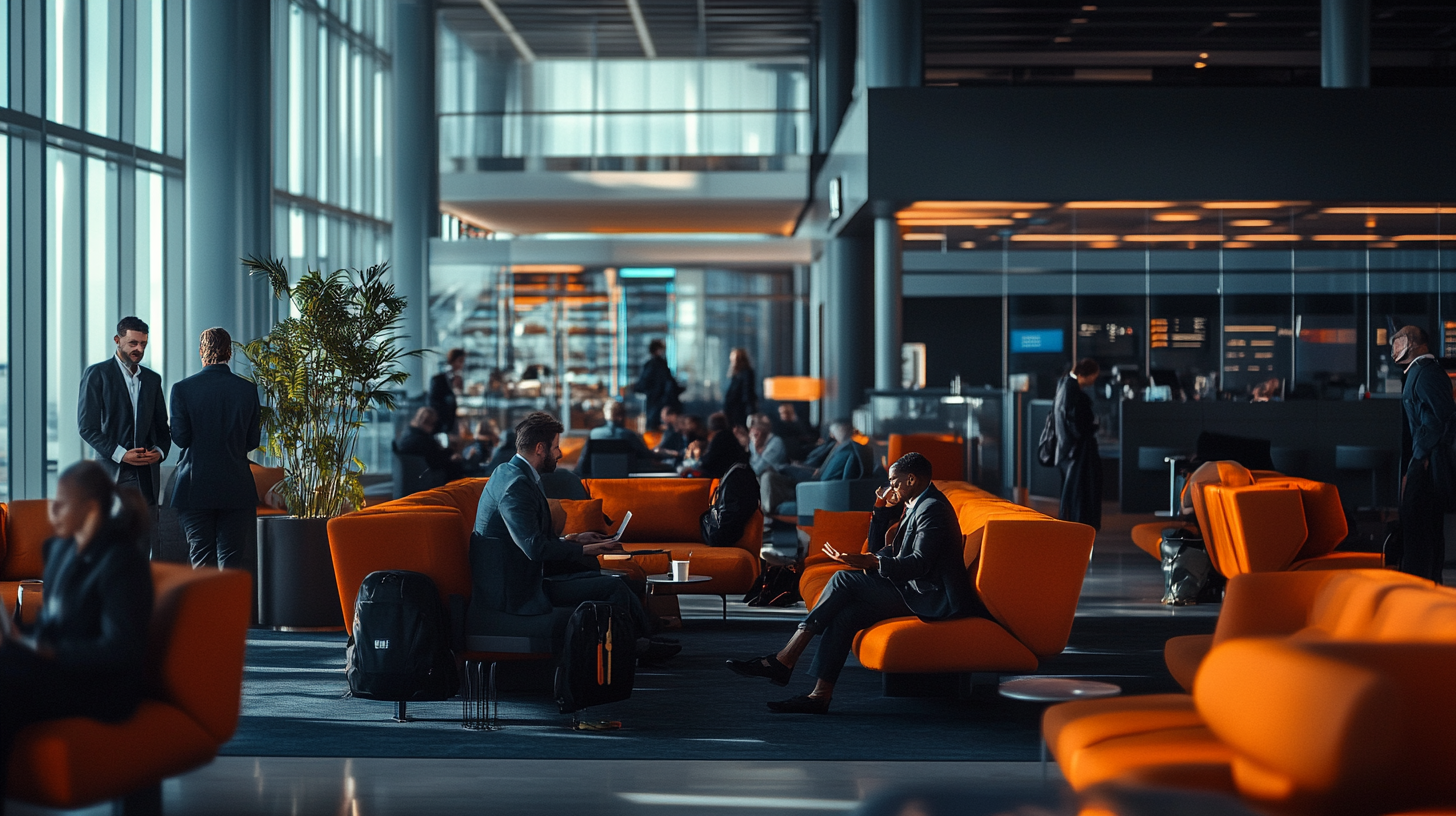
After experiencing a 52% cut in corporate travel spending at the height of the pandemic, this rebound feels like something of a renaissance. According to Globetrender and Amadeus Cytric, global business travel expenditures could reach $1.64 trillion by the year’s end. Personally, I’m seeing clear signs of this resurgence—from fuller planes on popular commuter routes to bustling airport lounges reminiscent of pre-pandemic levels.
FCM Consulting‘s quarterly reports highlight a notable uptick in hotel occupancy rates this season, with many properties reporting near-record numbers of business travelers. I believe this also reflects a strategic shift: organizations are no longer content to make do with skeletal travel budgets. They’re investing in face-to-face meetings, conferences, and events to reignite client relationships and foster deeper collaboration, a step many believe is crucial to long-term success.
This comeback, however, isn’t without its challenges. Rising travel costs, packed flight schedules, and the continued push for sustainable options mean that frequent flyers should stay alert for changes in pricing and availability. I recommend monitoring airfares and booking windows more closely than ever, especially since digital platforms and aggregator tools have improved significantly. A savvy traveler who keeps an eye on evolving trends can still find great deals—and even upgrade experiences—without blowing the budget.
Final Thoughts
This year is shaping up to be a milestone for corporate travel, characterized by groundbreaking tech solutions and a more human-centered approach to journey planning. Whether it’s AI-driven convenience or environmentally conscious decisions, these shifts aren’t just about incremental progress—they’re laying the foundation for what could be decades of innovation.
I’ve witnessed more collaboration across the industry than ever before, pushing us to reimagine how we work, meet, and move around the globe. By embracing these transformations, businesses have a real chance to improve not only their bottom line but the day-to-day lives of their traveling personnel. And for frequent flyers, embracing new realities—from AI-based tools to greener transportation methods—can offer a more rewarding adventure in every sense.
Vanessa Bloome’s Take
At the heart of all these trends, it comes down to striking a balance between meaningful technology and genuine human experience. I’ve observed that travelers benefit most when corporate and personal interests align: slick mobile apps offer freedom on the road, while a focus on well-being elevates everyday tasks into something more fulfilling.
My perspective is that acknowledging these changes and taking small, consistent steps—like opting for greener accommodations or trying out a new scheduling tool—can go a long way. The world of business travel continues to expand its horizons, and staying open to that growth is the best way to thrive.

